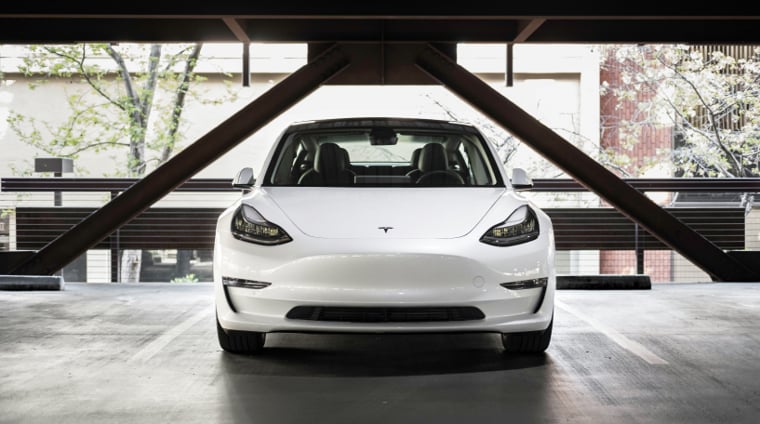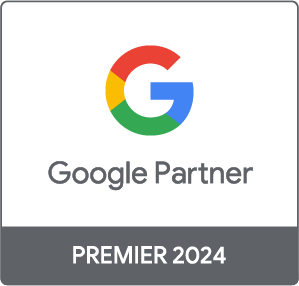Accelerate your growth with Google's new Vehicle Ads

A greater number of consumers are searching the web to find their next vehicle. In fact, a strong 92% of car buyers research online before they buy, and 66% of automotive calls generated come from Paid Search activity. The world is changing, and whilst in-person visits to dealerships still play a key component in a user’s buying journey, the first online port of call is the most important.
Furthermore, Covid has played a massive role in purchase behaviour - now more than ever people are seeking a comfortable and safe online experience without a physical in-person interaction with the product.
Introducing Vehicle Ads
In a nutshell, Vehicle Ads are a new ad format for Paid Search that displays nearby cars for sale. Google first introduced this shiny new addition at the National Automobile Dealers Association (NADA) show which was rolled out across the US, and more recently Australia. Well, this is soon about to change. Although an exact date has not yet been determined, select dealerships in the UK can expect to utilise this new format in Q1 of this year.
Buying a car is a massive financial commitment which combined with the saturated market - makes it a competitive field to be in. This new tool will be able to steer marketing efforts in the right direction, reaching the correct consumers in the right place. But what is this new ad format and how does it work? Let’s go into more detail.
What are Google Vehicle Ads?
We have already touched on this, but Vehicle Ads enable dealerships to showcase their range of cars directly on Google’s search engine results page (otherwise known as the SERP). These ads show at the top or side of the SERP and feature an image of the vehicle alongside important information like its make, model, price, mileage and the advertisers name.
Once clicked, an ad will direct traffic to the vehicle description page (VDP) where a user can convert on the dealers site through a means of actions - for example, filling in an online form or phoning the dealer, or even making a deposit to reserve online. Just like other Paid Search ads, a click accumulates to a certain amount of money that the dealership will have to pay.
How Vehicle Ads work
Like that of Shopping Ads or Performance Max, Vehicle Ads do not include any keywords. Instead they are based on an up-to-date inventory feed connected to Google Merchant Center. This feed contains all the vital vehicle information like year, make, model, condition, description, mileage, price and other relevant details for every car. Google then uses this data to identify which car would be the most relevant for a search, and therefore which ad to show in return.
But there’s more - not only this, but through using Google Merchant Center, key inventories can be tracked and the performance of ads can be analysed.
Getting started
1. Account set-up
Three separate accounts are needed to showcase your Vehicle Ads - You must create a Google Merchant Center, Google Ads and Google Business Profile Account (although this one is not required if you submit a shop feed).
2. Enable the Vehicle Ads programme
Once your accounts are created, you will need to fill in the Vehicle Ads onboarding form to submit your interest which includes both your Merchant name and Merchant Center Account ID - hence the reasoning for creating the account first. Google will then review your eligibility and contact you once the review has been completed (and hopefully approved). This usually takes a few days.
3. Logging in
Once you get the green light, you’ll need to sign into your Google Merchant Center account and navigate to the Growth section. Here you’ll need to click on Manage Programs and filter through to Vehicle Ads. Simply click the ‘get started’ option.
4. Submit your inventory feeds
This is where inventory feeds come in, and you’ll need to submit these feeds directly to Google Merchant Center. The main aim here is to provide the most accurate information from your website. We suggest using the same inventory feed that powers your Vehicle Description Pages. Your inventory feed will then be submitted to Google and the process of reviewing your feeds, the attributes for each listing, and your website will begin. Keep in mind that this could take a week or so to complete.
5. Link your accounts
To keep you moving forwards whilst the review process is taking place, you can link both your Google Ads and Google Business profile to Google Merchant Center. This is particularly worthwhile as Google will be able to link your listings to local searches as well as gaining access to your location which can be portrayed in your ads.
6. Create your first Vehicle Ad campaign
Once all the above has been completed and your inventory feeds have been approved - the Vehicle Ad campaign creation can begin! This is where Google Ads comes in - you’ll need to follow the create a new campaign process and select the option to create a Performance Max campaign. Keep in mind that you’ll need to select your new feed in your Google Merchant Center account.
Benefits
Vehicle Ads are based on bottom of the funnel targeting - which means these ads are aimed at users with a high shopping intent, who are on track to becoming paying customers. This is the vital stage, through being specifically targeted to the individual user, the presented advertisement can move them closer to the final purchase. Not only this, but other key benefits include:
- More qualified leads - as key information and imagery is shown before a click making the lead stronger.
- Omnichannel goals - Vehicle Ads can be optimised for both online and offline conversions (shop visits).
- Automated targeting - most relevant and up-to-date listings can be shown for the correct search query.
- Increased brand awareness - gets your dealership name out there and in-front of your competitors.
- More traffic can be driven to the website - healthy traffic can be driven to your site and will enable users to learn more about your brand and vehicle offerings.
- A range of vehicle types can be targeted - both new and used vehicles can be advertised - whilst ads can also be utilised to highlight a specific model that needs to be shifted, putting it front of mind.
In summary
We hope this article has helped you gain a better understanding of the new Google Vehicle Ads. Achieving a strong online presence is crucial for businesses, and Vehicle Ads look like a vital piece of that puzzle to rev-up dealership interest and harness the most powerful leads. A wider audience will be reached, whilst ads are placed in front of the right users, at the right time - driving a dealership to success.
As new developments and information come to light, the Evo search team will be keeping you updated. We look forward to utilising Google’s new ad format!
If you need help applying for and setting up your Vehicle Ads, get in touch with the Evo team.








